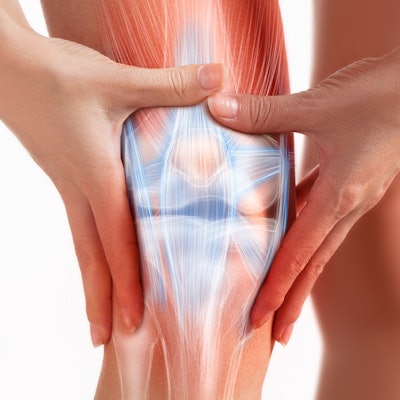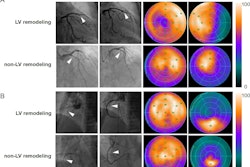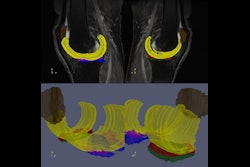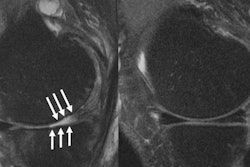
SPECT/CT imaging is an effective way to evaluate noninfected painful knees in patients after they have undergone knee arthroplasty, a literature review published March 21 in the Journal of Orthopaedic Surgery and Research has found.
A team of nuclear medicine physicians and orthopedic surgeons led by Dr. Kelly Anzola, PhD, of the Clinica Reina Sofia in Bogota, Colombia, found that SPECT/CT proved highly accurate for identifying different sources of knee pain, particularly in cases of joint loosening, patellofemoral disorders, and component malalignment.
"The best evidence available to date shows that SPECT/CT has high sensitivity and specificity in identifying the source of pain in noninfected knees after knee arthroplasty," the group noted.
A painful knee after arthroplasty represents a major diagnostic challenge for orthopedic surgeons. Despite a detailed history and a thorough clinical examination, it is often difficult to precisely identify the cause of the pain and establish a correct diagnosis, according to the authors. Conventional x-ray is the first line of investigation, as it is commonly available and relatively cost-effective. Gross abnormalities, such as periprosthetic fractures or severe loosening can be easily detected, but detailed assessment of anatomical structures on x-rays is limited, they explained.
And while CT is useful for evaluating cortical bone abnormalities and offers excellent anatomical detail, it is not as effective for assessing soft tissue abnormalities and intramedullary changes and requires a higher dose of radiation, the authors added. That's where hybrid SPECT/CT comes in.
The modality carries a radiation burden of only 2 mSv to 4 mSv, and has recently emerged as an alternative imaging tool in patients with painful knees after arthroplasty, as it can help detect functional changes before abnormalities can be seen by x-ray and CT. Yet few systematic reviews related to this topic have been published, Anzola's team wrote.
The group conducted a literature review on the topic that included 493 articles published between 2010 and 2022. Ultimately, eight studies met the inclusion criteria of being classified as diagnostic tests, with a total population of 308 patients. As a primary outcome, the researchers defined the role of SPECT/CT in the diagnostic approach to noninfected painful knee arthroplasty.
The review indicated that for cases of loosening, patellofemoral disorders, and component malalignment -- all of which can be significant causes of pain after arthroplasty -- SPECT/CT's sensitivity and specificity were 86% and 90%.
For policymakers, the use of SPECT/CT post-arthroplasty in patients with knee pain may have implications for resource allocation and healthcare budgeting, according to the investigators. The findings also suggest SPECT/CT could change the initial diagnosis, identify or exclude different causes of painful knee arthroplasties, guide subsequent treatment, and positively impact final clinical outcomes, they wrote.
"Including SPECT/CT in the diagnostic flow of painful knee arthroplasty will have significant clinical repercussions," the group concluded.





















